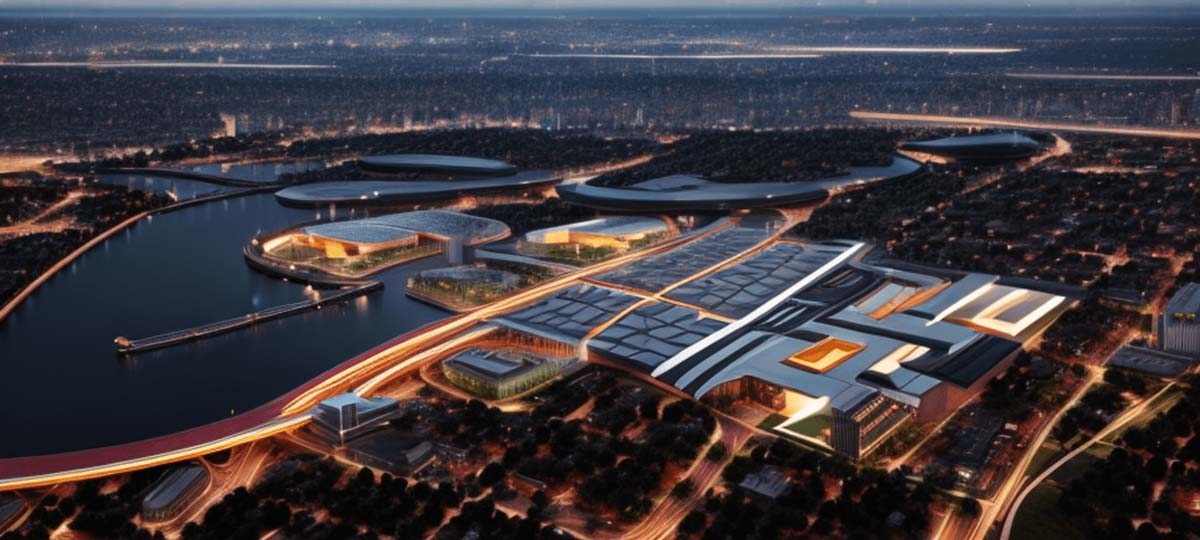
The Role of Zoning Designations in Land Use Planning
Creating a successful and thriving community that prioritizes its residents’ happiness, convenience, and safety doesn’t happen by chance. Thriving communities are designed by thoughtful city planners who envision creating livable spaces for their citizens. This is where land use planning comes into play.
As we’ve mentioned before, everything points back to zoning laws regarding new development, and this is no different for land use planning. Zoning designations play a key role in land use planning because they make the plan a reality. In this article, the Robertson Architecture team will break down the role of zoning designations in land use planning and how this affects developers.

What is Land Use Planning?
Land use planning is how cities and communities design functional, usable, and safe spaces for residents. It covers everything from population density and the location of sidewalks and highways to keeping hazardous industrial plants from polluting the air and water near residential areas and schools. Land use planning protects residents and the environment, creating a cohesive atmosphere for individuals and businesses to succeed.
The land use plan is determined by the analysis of what’s best for the community, and zoning designations put this plan into action. These policies and designations are adopted to keep communities safe and accessible and to protect residents from environmental factors such as flooding and pollutants.
What is the Role of Zoning Designations in Land Use Planning?
Land use planning informs zoning laws. The plan is created by city and community officials who complete extensive land analysis to examine the community’s needs and ensure that these needs are met in an equitable and sustainable fashion.
Using the land use plan as a guide, planners then implement zoning designations on the lots throughout the designated area. As the land is sold, zoning designations ensure that the land use plan is realized by creating precise specifications of the type of structure, size, and usage that can be developed.
Suppose a 0.3-acre property is zoned single-family with a floor area ratio of 0.25. In that case, a developer can put a 3,267-square-foot single-family house on the lot (to see how we reached that number, check out our article on floor area ratio). If the land is zoned for multifamily living, a developer could potentially build a duplex or triplex on the lot, as long as it is 3,267 square feet or less.
6 Types of Land Use Planning
There are 6 primary types of land use planning: Recreational, Transportation, Agricultural, Residential, Commercial, and Industrial. Below, we will break down what’s included in these categories in the land use plan. Other honorable mention land use categories include hospitals, city buildings, and tourism.
- Recreational – Recreational land use planning includes distinguishing the location of parks, pools, swimming/fishing holes, ponds, golf courses, sports fields, community spaces, playgrounds, and more.
- Transportation – Transportation land use planning includes distinguishing the location of roads, highways, trains, bus stops, airports, stop lights, sidewalks, and more.
- Agricultural – Agricultural land use planning includes distinguishing the location of farmland, the type of crops grown, the amount and type of livestock, pest control, water rights, and more.
- Residential – Residential land use planning includes distinguishing the location of residential property and the density of the structure allowed on a particular lot. Examples include single-family homes, townhomes, apartments, condos, duplexes, triplexes, etc.
- Commercial – Commercial land use planning includes distinguishing the location of businesses, restaurants, retail, warehouses, office space, and more based on the community’s needs, bringing jobs to the area.
- Industrial – Industrial land use planning includes distinguishing the location of manufacturing facilities, power plants, mills, sewage treatment facilities, and more.
Developers and Zoning Designations
Developers must understand local zoning designations as these laws determine what can be built on a given piece of land. If a developer wants to build a duplex or townhome community, they need to check the zoning laws for the lot to make sure that their desired building program fits within the zoning designations for the property. If it turns out the lot is zoned for a single-family home, they must either find another property or consider rezoning it.
Even though this may feel restrictive, it’s helpful to remember that when it’s done right, the land use plan and zoning designations are designed to ensure that communities can support their members in the best possible way. This leads to more desirable neighborhoods and better returns on your investment.
Why Are Land Use Planning and Zoning Designations Important to Architecture?
Thoughtful land use planning sets up communities for lasting success. An architect must be informed and up-to-date on their area’s land use plan and zoning designations to guide their clients toward properties that will allow them to construct their desired building program. Hiring an architect on your team early in the development process can help save time with the intricate research on zoning designations and land use planning, as they are well versed in this area.
Our Experts Will Walk You Through the Land Use Planning and Zoning Designation Process
At Robertson Architecture, understanding land use planning and zoning designations’ impact on development is integral to our business model. Send us a message today, and we will schedule a time to discuss how these items will affect your new development project.
Author: David Robertson is an Atlanta based architect and founder of Robertson Architecture. Robertson Architecture on the premise of helping entrepreneurs and like-minded individuals exceed their goals.
In 2018, Robertson Architecture was formed with the single focus of helping homeowners and entrepreneurs exceed their goals. The firm works with custom residential homes, townhouses, restaurants, and hotels all across the Southeast. David has a passion for helping entrepreneurs and homeowners realize their dreams.
With over 10 years of experience, David spent the beginning part of his career working on small to medium sized commercial projects across the U.S., including hospitality projects, office buildings, multi-family, and custom homes.
- David Robertson AIA NCARB
- Office 470.795.9596
- info@robertsonarc.com

0 comments